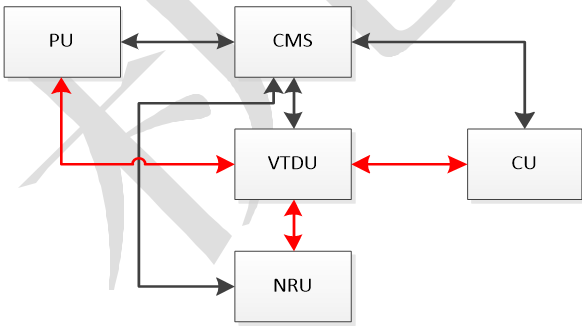Description of network differences between wired and 3G/4G wireless video surveillance systems
Description of network differences between wired and 3G/4G wireless video surveillance systems
Smarteye platform performance demand estimation
System estimation

Black is the command channel, and red is the data stream such as audio and video.
1. CMS: Central Management Server. Deploy one with the database storage pu\cu\vtdu\nru and other information.
2. NRU: Storage server. It is recommended to deploy only one with the CMS (multiple).
3. VTDU: Streaming media forwarding server. Deploy multiple hosts.
4. PU: Equipment. CU: Client.


Software Installation & Operating Environment
Hardware: 1G or more memory, CPU above 1GHz
Software: Any WINDOWS OS, recommended Windows? SERVER 2008 operating system and later versions
Note: The installation of the server requires an administrator (administrator) to log in.
For the firewall enable of the port, see FAQ-2.
The installation of the mobile video management platform smarteye server does not require any configuration, download the complete installation package (Server-B-mmdd-hhmm.rar), and the setup.exe is directly installed after decompression, without any configuration.
The interface that runs is shown below:

In addition, all of our software supports online upgrades:

Deployment requirements
Because CMS, VTDU, and NRU do not have a lot of complicated calculations, there is no high demand for CPU.
VTDU requires memory, and each channel of video forwarding needs to allocate 1MB of cache memory. This is the memory requirement.
For streaming media server, the most important thing is the network quality and bandwidth. VTDU and NRU (see storage plan configuration) data streams need sufficient bandwidth.
It should be emphasized that the bandwidth requirement of the 4G image transmission to the smarteye server depends on the number of concurrent videos. Note: The number of concurrent devices is not the number of devices online at the same time. The number of concurrent users is the video of how many devices are opened at the same time. .
For example, if a smarteye server has 300 devices online at the same time, the user only views the video of one device at a time, then the number of concurrent calls is 1, and the server has 1 Mbps bandwidth is enough;
If you view the video of 10 online devices at the same time, the server bandwidth requirement is recommended to be between 5-10Mbps, depending on the resolution of the video transmission set by the device, the frame rate, etc., the SD is generally lower than 0.5Mbps, 720P/ 1080P HD is generally more than 1Mbps.
If a server has insufficient bandwidth, multiple VTDU servers need to be deployed to balance bandwidth requirements.
The 3000-10000 concurrency, considering only the CPU and memory, requires 3-5 VTDUs, 1 CMS, and 1 NRU.
Typical example,
A single server supports 2000 devices at the same time, 50 channels of video concurrent, it is recommended that 4 core CPUs, such as Intel Xeon series processors, memory requirements of not less than 8GB, if you do not make platform storage video (take 4G traffic platform video) , do not require the hard disk.
About platform docking integration
Typical industry needs are:
The customer has an existing business management system, such as the water flood control command system, the power operation management dispatch system, the traffic police business management platform, usually the B/S framework.
The final requirement is to increase the live real-time image, voice, positioning trajectory, high-pixel live photos and voice-scheduled multi-party calls for mobile video through the customer's existing WEB management platform. These functions are all from our 4G graphics transmission equipment.
Customers can quickly integrate integration by calling the WEB's client SDK (OCX or RTMP/HLS, etc.), which will showcase a new generation of business management systems that integrate the mobile video subsystem in approximately 1-2 days.




